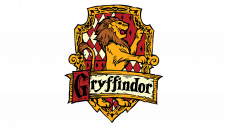Mickey Mouse Logo
Mickey Mouse is a fictional character, a whimsical, anthropomorphic mouse known for his high-pitched voice and optimistic personality. Created by Walt Disney and Ub Iwerks, he first appeared in 1928 in the cartoon “Steamboat Willie.” Mickey is characterized by his large circular ears, red shorts, white gloves, and yellow shoes. He’s a cultural icon, symbolizing the Walt Disney Company and the joy of animation. His adventures often involve his girlfriend Minnie Mouse, friends Donald Duck and Goofy, and his pet dog Pluto.
Meaning and history
Mickey Mouse, an iconic character in animation history, was created by Walt Disney and Ub Iwerks in 1928. Mickey made his debut in “Steamboat Willie,” one of the first sound cartoons, marking a pivotal moment in entertainment. Initially characterized as mischievous, Mickey’s personality evolved into the cheerful, kind-hearted figure known today. He became the face of The Walt Disney Company, propelling it into a leading entertainment brand.
Mickey’s design, with large ears, red shorts, and white gloves, is universally recognized. His significant other, Minnie Mouse, and friends like Donald Duck, Goofy, and Pluto, became central characters in his stories, which often revolve around themes of friendship, adventure, and perseverance.
Throughout the decades, Mickey starred in numerous films, including “Fantasia,” where he appeared as the Sorcerer’s Apprentice, further cementing his cultural impact. He transitioned from black-and-white to color, embracing technological advancements in animation.
Beyond film, Mickey became a merchandising phenomenon, featured in comics, video games, and as a mascot in Disney theme parks globally. He holds the unique honor of being the first cartoon character to earn a star on the Hollywood Walk of Fame.
Mickey’s enduring popularity reflects his adaptability and the joy he continues to bring to all ages. His legacy extends beyond entertainment, symbolizing imagination, innovation, and the magic of storytelling.
1928 – 1930
This image is a monochromatic promotional material from the early era of animation, prominently displaying an enthusiastic Mickey Mouse. He stands jauntily with a propeller in hand, hinting at an aviation adventure in the featured short, “Plane Crazy.” Above, bold text announces the production as a “Sound Cartoon,” signifying its place in the novel era of synchronized sound films. The artwork credits “A Walt Disney Comic by UB Iwerks,” showcasing the collaborative creation of the beloved character. Noticeable in the frame is the mention of the “Powers Cinephone System,” a testament to the audio technology of the time. The copyright stamp, “MCMXXIX,” firmly places this piece in the year 1929.
1930 – 1932
This graphic, steeped in vintage allure, showcases a classic animation closure screen, featuring a jubilant Mickey Mouse on the left and a charming Minnie Mouse on the right, both in full animation regalia. The bold header “Walt Disney’s Mickey Mouse” arches above a circular frame with the words “THE END” at its center, signaling the conclusion of a cinematic tale. Below, the affiliation with “COLUMBIA PICTURES CORP.” is acknowledged, alongside a nod to the “BRAY-HURD PATENTS.” Contrasting the earlier image, which heralded an adventure’s start, this one signifies a wrap-up, with both characters displaying cheer and contentment, rounding off the story showcased.
1932 – 1935
This monochrome emblem from 1935 heralds “Mickey’s Service Station,” a cinematic offering under the banner of United Artists. Mickey Mouse, animated with open arms, is mirrored by Minnie Mouse, her dainty figure and flower hat radiating charm. The title is central, surrounded by an aura of excitement. This emblem contrasts the finality of the previous “The End” screen, bursting with the promise of a new narrative. Joseph M. Schenck’s presentation credit crowns the top, while the Walt Disney Productions touch graces the bottom, framing the graphic with an air of cinematic prestige.
1935 – 1937
The image presents a title card from a classic animation era, highlighting “A Walt Disney MICKEY MOUSE in TECHNICOLOR” production. The bold, block letters in contrasting colors of yellow and red stand out against a textured background, signaling the vibrant hues of Technicolor film. This title card signifies a technological leap from the earlier black-and-white presentations, such as “Mickey’s Service Station,” to a more visually rich experience, as indicated by the “United Artists Picture” label. The copyright date, “MCMXXXV” (1935), is also prominently displayed, anchoring the work in its historical context.
1937 – 1953
This title card emanates the allure of classic cinema with its embossed red lettering announcing “A WALT DISNEY MICKEY MOUSE” production, accompanied by the vibrant “Color by TECHNICOLOR” label, indicative of the rich, color film technology of the era. Distributed by “RKO RADIO PICTURES,” it’s a testament to the industry’s golden age. The presentation differs from the previous card’s flat design, embracing a three-dimensional effect that leaps from the textured background, suggesting a leap in film presentation and marketing sophistication. The year “MCMXXXV” (1935) is subtly placed, dating this piece within the 1930s’ animation renaissance.
1953 – 1999
The image features a bold, modern rendition of the “Mickey Mouse” text logo, with the name of the iconic character in a vibrant red hue with black outlines. The font is playful and dynamic, a nod to the character’s fun and lively persona. This logo is more simplified and graphic compared to the earlier title cards, reflecting a shift towards a more contemporary and minimalist design aesthetic that became popular in the mid-20th century. It lacks additional information present in previous logos, focusing solely on the character’s name in a stylized form.
1999 – Today
The logo presents “MICKEY MOUSE” in bold, jagged letters, with a striking contrast of red fill and black shadows, giving it a three-dimensional appearance. This design conveys a more edgy and modern vibe compared to its predecessor, which had smoother lines and a playful tilt. The sharp angles and pronounced shadows in this logo add a sense of dynamic movement, suggesting a contemporary twist to the classic character’s branding.


















